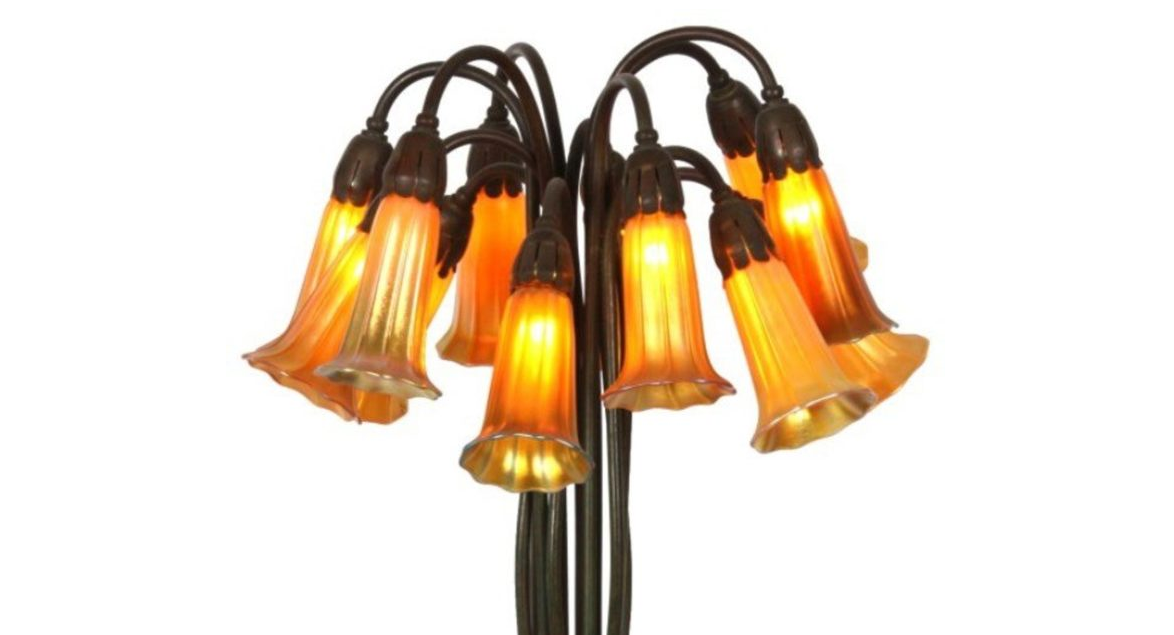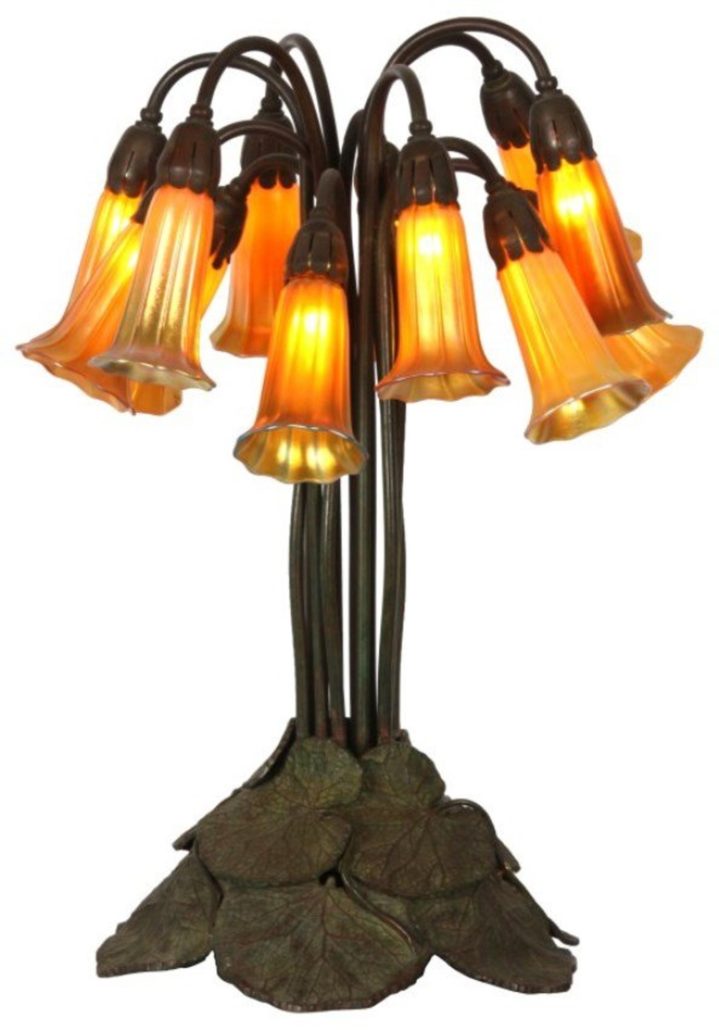
NEW YORK – The bright plumage of the Central American quetzal bird inspired some of the most colorful art glass ever made. With its striking metallic green feathers (quetzal translates to “large brilliant tail feather” in the Aztecs’ native language), crimson chest and a crown of yellow and green, the bird was a fitting inspiration for the name “Quezal Art Glass and Decorating Company,” founded by Martin Bach Sr and Thomas Johnson in 1901.
The firm’s advertising, which included its bird logo, stated: “All our product is reproduced in the beautiful colorings of the Quezal Bird,” according to the Wheaton Arts and Cultural Center. Sadly, few factory papers and catalogs survive from the company’s early days, even though the firm was in business for more than 20 years.
Both Bach and Johnson had previously worked for Louis Comfort Tiffany’s glassworks in Queens, New York, Bach as a formula mixer and Johnson as a glassblower. They departed Tiffany and launched their own glass company in nearby Brooklyn. Using similar techniques perfected at the Tiffany factory, they crafted lustrous and iridescent pieces in rainbow hues with pulled and applied decoration. The similarities were so great between the two competing firms’ wares that Tiffany was reportedly enraged.
Quezal created a wide array of decorative and functional wares, including finger bowls, salts, vases, lighting shades and compotes, usually in the form of blooming lilies, crocuses, and tulips with shimmering golden interiors and decorated with nature motifs symbolic of the Art Nouveau taste that prevailed during this period.
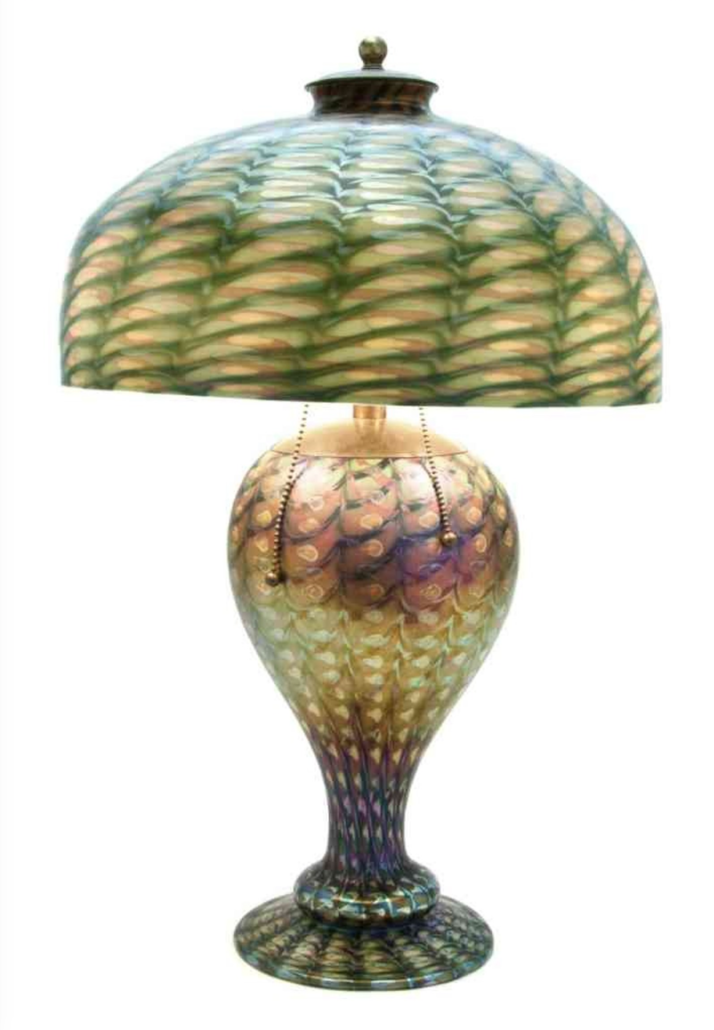
Prices for new Quezal glass were on par with Tiffany’s and exceeded what Galle and other French glass imported to America at the time were fetching. A century later, collectors still pursue choice examples of Quezal. “I believe the Quezal and art glass market are quite consistent and strong at the moment. From my experience in being involved in auctioning Quezal glass, the most important factor to its value is the quality of the decoration, more so than the form,” said Chase Lanford, glass and lighting specialist at Jeffrey S. Evans & Associates, Mount Crawford, Virginia. “However, there are forms that are rare and do drive the price higher if the piece also is complemented with a quality decoration and/or rare color combination.”
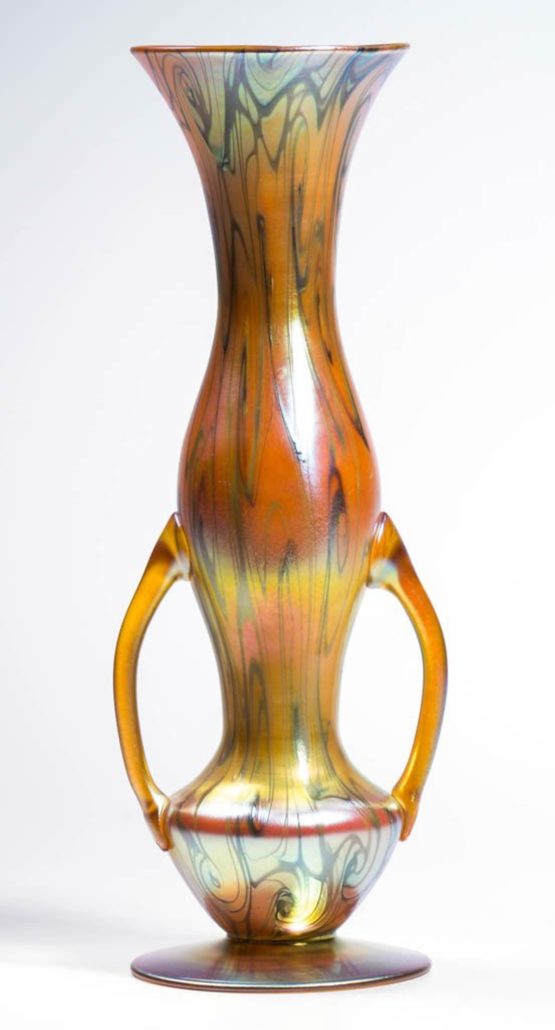
A sublime example is a double-handled vase with blue coil decoration (shown above) that sold at Jeffrey S. Evans in January 2015 for $2,760. “This is a very rare form, but doesn’t have the most elaborate decoration (coil decoration). In this case, the rarity of the form drives the price,” he said.
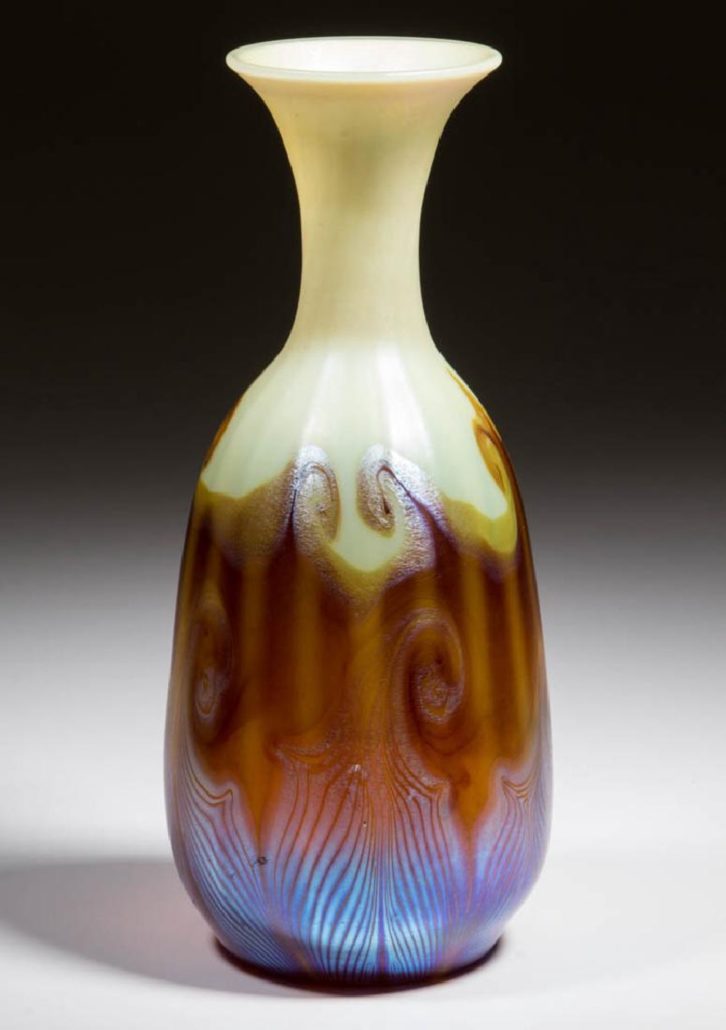
Another standout is a tall gourd-form vase (shown above) with pulled decoration and a flaring mouth, having an opal ground with brown/amber and iridescent decoration, that brought $3,276 at a January 2017 Evans auction. “This form is generally associated with higher-end decoration, and in this case is also coupled with a rare color (brown/amber). This is a great example of rarity in form meeting quality in decoration. This vase represents our highest confirmed Quezal piece.”
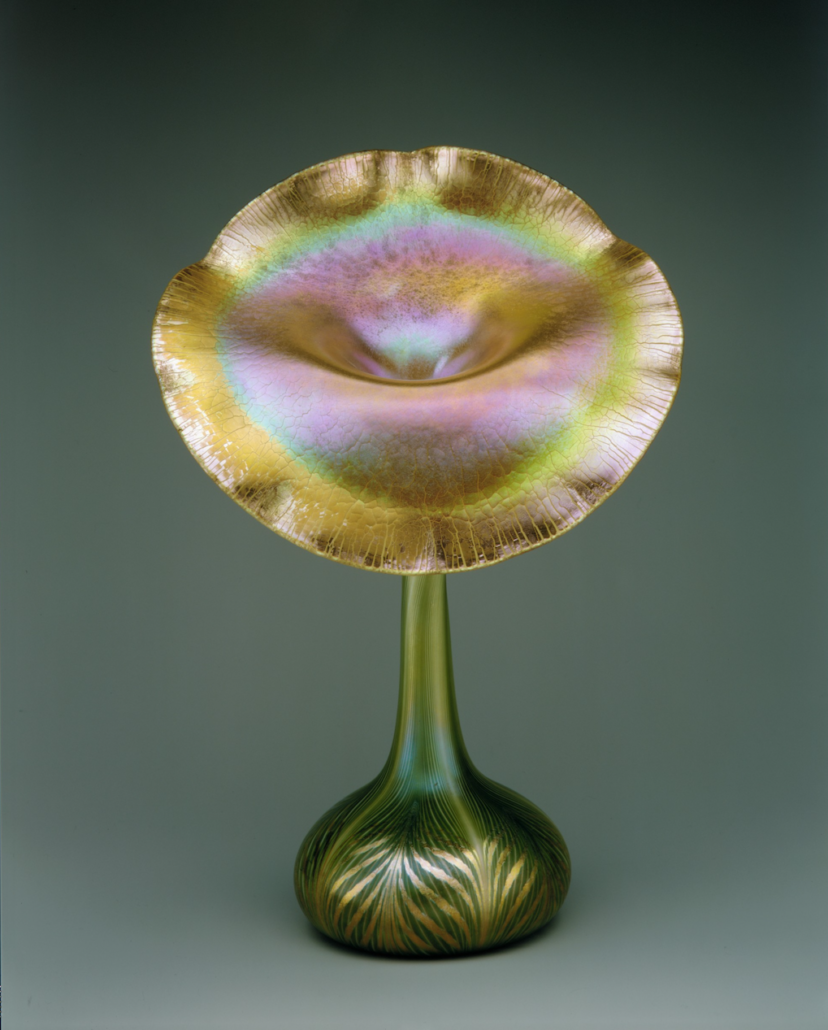
Among its most popular vase forms is the Jack-in-the-Pulpit vase, a form also used by Tiffany and other glassmakers but taken to new levels by Quezal. “Most Tiffany examples in this form are simply golden or blue iridescent. Many Quezal examples are highly decorated and consistently bring the higher ranges of what you see in Quezal glass,” Lanford said. “The most expensive example that I am aware of sold for $11,000 (hammer price) at auction.” That vase sold at a Dan Morphy auction in November 2013.
Overall the art glass market, particularly Quezal, is still booming market and shows considerable growth potential. Even as market prices fluctuate, Quezal remains a beautiful investment, as timeless and elegant as when skilled craftsmen first made these pieces over a hundred years ago.
# # #


